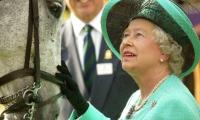KARACHI: Foreign currency inflows received through the Roshan Digital Account (RDA) surged to their highest level in over two years in May, bolstering Pakistan’s foreign exchange reserves.
Pakistan received $224 million in gross and $215 million in net inflows from Pakistanis living abroad in May under the RDA, marking the highest level since March 2022. In April this year, these inflows amounted to $171 million. The gross funds of $6 million were repatriated in May, showing high inflows received and a smaller amount repatriated during the month.
“RDA is a good initiative to generate foreign currency deposits and is a solid alternate source of funding,” said Samiullah Tariq, the head of research at Pak-Kuwait Investment Company.
Data from the State Bank of Pakistan showed on Friday that RDA gross inflows reached $8.055 billion between September 2020 and May 2024. Out of the total received funds, $1.596 billion has been repatriated while $5.070 billion has been utilized locally. As a result, the net repatriable liability remained at $1.390 billion.
“These [RDA] flows would be channelized towards foreign debt servicing and building foreign exchange reserves. Subsequently, this results in the strengthening of the rupee against the dollar,” said Awais Ashraf, director research at Akseer Research.
Inflows in the RDA increase the foreign reserves of commercial banks, which is also reflected in the country’s total forex reserves. As of June 7, Pakistan’s foreign currency reserves held by the central bank stood at $9.103 billion, sufficient to cover over two months of imports. The country’s total reserves stood at $14.384 billion, with the reserves of commercial banks at $5.281 billion.
The SBP anticipates that the reserves will stay above $9 billion by the end of June, even after repaying $1 billion in external debt during this period. Throughout the 11 months of this fiscal year, the SBP has repaid a total of $10.7 billion, bringing the total repayments for FY24 to $11.7 billion. Additionally, there are rollovers of $11-12 billion in FY24, indicating a gross requirement of $22.7-23.7 billion.
The government is in negotiations for a long-term extended fund facility with the International Monetary Fund. A successful IMF programme could lead to an inflow of funds from international financial institutions and friendly countries. This, in turn, is expected to decrease the government’s reliance on domestic borrowing during FY25. The government’s goal is to secure $2.4 billion in external financing through commercial loans and Eurobonds in FY25.
According to the SBP data, a total of $957 million in net investments were made through the RDA between September 2020 and May 2024. Out of this amount, $338 million was invested in conventional Naya Pakistan Certificates (NPCs), while $582 million was invested in Islamic NPCs.
Additionally, $37 million was invested in the stock market, with additional liabilities totalling $26 million. Net repatriable liabilities amounted to $1.390 billion, and the account balance stood at $407 million.
RDA investment statistics in the upcoming months will be critical. This data will show whether these investments remain intact after Pakistan’s central bank started monetary easing. This week, the SBP cut its key interest rate by 150 basis points to 20.5 per cent for the first time in four years.
China's President Xi Jinping applauds during the opening ceremony of the Forum on China-Africa Cooperation in...
This photograph shows the logo of US multinational technology conglomerate Meta, taken on May 22, 2022. —...
This is a representational image of a person holding gold chains. — AFP/FileKARACHI: Gold prices decreased by...
An employee working at a textile factory in Pakistan's port city of Karachi, on April 7, 2011. — AFPLAHORE: There is...
People shop at a crowded market ahead of Diwali, the Hindu festival of lights, in the old quarters of Delhi, India on...
Roblox Corp Chief Executive Officer and Co-Founder Dave Baszucki seen in this image. — X/@DavidBaszucki/FileRoblox...







